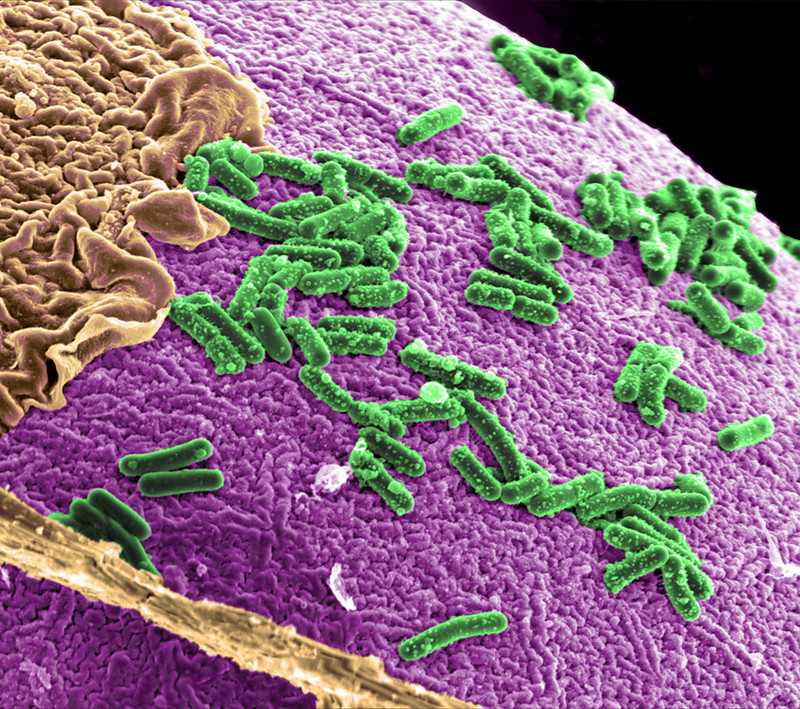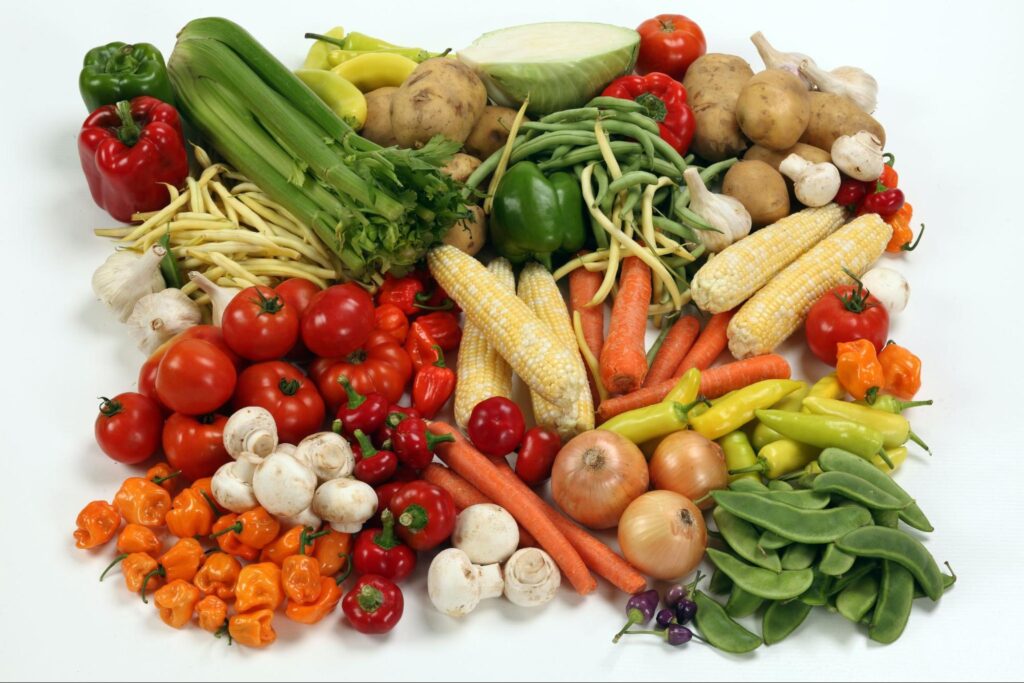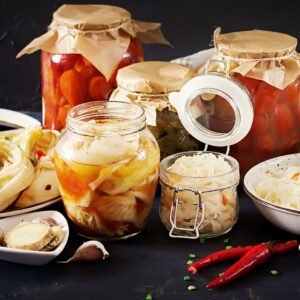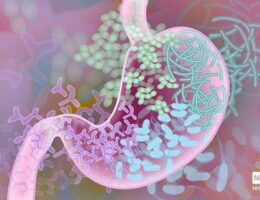HEALTHY INTESTINAL BACTERIA can really be amped up with an array of delicious fermented foods, including wild fermented wine!
In this article, we’ll discuss the roles of probiotics and prebiotics, as well as how fermented foods can wage war on bad bacteria and quickly relieve your bloating, gas, indigestion, and more.
And later I’ll share with you the most fun with fermentation, how to MAKE WILD FERMENTED WINE.
As we’ve discussed, a balance of healthy intestinal bacteria is essential for a healthy gut, high energy, and overall feelings of well being. Good gut bacteria help break down food, absorb nutrients, and protect the body from disease-causing pathogens.
A healthy balance of bacteria in your intestines can quickly be disrupted by too much bad bacteria, poor food choices, high stress, antibiotics, man-made chemicals, parasites, and more.

Source: Flickr
To promote a healthy gut environment, it’s important to understand what healthy intestinal bacteria are, and how to supplement them with probiotics or prebiotics. Those terms are often used interchangeably, but they have very different meanings.
Prebiotics are non-digestible carbohydrates that act as food for the beneficial bacteria in the gut. Probiotics, on the other hand, refer to beneficial bacteria that support the healthy function of your gut microbiome. They’re live microorganisms that help improve your health when you consume enough of them.
Both prebiotics and probiotics play an important role in your overall health.
Weight loss and a strong immune system are also benefits of probiotics and prebiotics. Research has proven that probiotic supplements also have a positive effect on mood, cognition, and mental health.
Though there are thousands of them, some of the most common probiotics include Lactobacillus, Bifidobacterium, Saccharomyces, Streptococcus, Enterococcus, Escherichia, and Bacillus.

Source: Randy Fath from https://unsplash.com/
What foods provide probiotics?
Some fermented foods (such as sourdough bread and most pickles) are processed after fermentation, which kills the microorganisms. Microorganisms that are not alive do not provide the same benefits as living microorganisms. So contrary to some information online, they are NOT considered probiotics.
Examples of prebiotic foods include onions, garlic, bananas, asparagus, oats, apples, legumes and whole grains.
Prebiotic drinks such as kombucha and kefir are also becoming increasingly popular.
Eating a balanced diet that includes these prebiotic foods can help you keep your gut healthy, and functi

Source: https://vegan.rocks/
oning properly. And prebiotic supplements can be found in many forms, such as powders, capsules, and liquids.
Fermented foods are a great source of natural probiotics. They’ve been part of the human diet for almost 10,000 years, and now they’re more popular than ever. Not only do they provide incredible health benefits, but you’ll also enjoy their unique flavors.
From sauerkraut to kombucha, you’ll find a variety of fermented foods in grocery stores and farmers markets. So it’s easy to add them to meals, or to snack on them in-between.
Fermented foods are an excellent way to spruce up your diet, and to add a variety of flavors, textures, and nutrients.
Fermented foods are rich in probiotics, which support a healthy gut microbiome. They’re increasingly popular, as people look for easy ways to improve their gut health and energy levels.

Source: https://www.mdpi.com/2072-6643/14/7/1527
The health benefits of fermented foods have been intensively investigated. Each fermented food typically hosts a distinct population of microorganisms. Once ingested, nutrients and microorganisms from fermented foods may survive to reach the gut microbiome. Clinical studies clearly show that fermented foods can affect the gut microbiome in both the short and long term, and should be considered an important element of the human diet.
What does it mean to ‘Ferment’ food?
Fermentation is simply the metabolic process that naturally converts sugar to acids, gasses, or alcohol. This inhibits the spoilage of certain foods, such as cabbage, which becomes sauerkraut. Foods can be fermented by placing them in an airtight container, and adding microorganisms like bacteria or yeast.
Fermentation has been used as a natural preservative for centuries. Because they’re so rich in good bacteria, fermented foods can very quickly increase the balance of good bacteria in your gut, and win the war against the bad bacteria. So your symptoms like bloating, gas, and indigestion go away.

Source: https://www.ncbi.nlm.nih.gov/pmc/articles/PMC4303846/
These are all examples of fermented food and their beneficial bacteria.
The term “wild fermentation” refers to the process of naturally occurring bacteria and yeast to ferment food. In other words, the raw food naturally contains microorganisms that react in combination.
Sauerkraut is a wild fermented food. Cabbage, salt and water (prepared in advance as ‘brine’), utilize a naturally-occurring bacteria, Lactobacillus, to break down and ferment. If exposed to oxygen for long enough, the cabbage would simply mold.
Some popular examples of wild fermented foods are Kimchi and Kombucha.
Kimchi is a combination of sauerkraut and other vegetables, which is served in Korea with just about every meal as a side dish. It’s easy to make at home.
Kombucha has been made for centuries. It’s a fermented, fizzy drink made with tea, sugar, bacteria, and yeast. If you’ve never tried it, start easy, as it does contain sugar and may contain alcohol.
Now let’s get on to the more adventurous challenge, making wild fermented wine.

Source: https://sitn.hms.harvard.edu/flash/2020/wild-fermentation/
Perhaps you’ve seen the term, “wild ferment”, on a wine label. That means the winemaker has allowed the natural yeasts of the grape skins and in the environment just do all the fermenting. Yeasts are everywhere, and by leaving the grapes alone, the thousands of fungi eventually spontaneously ferment.
Some winemaking enthusiasts say it’s easy to make wild fermented wine at home.
You only need a few ingredients. The higher quality the ingredients, the better the wine. Use pure water and fresh, organic fruits. Be sure to use only food grade containers and utensils.

Source: SaferCures
Here are the simple 10-step directions for making Wild Fermented Wine at home:
- In a separate bowl, dissolve the sugar in the water.
- Remove seeds or pits from fruit. Place fruit in the jar.
- Pour sugar water over fruit in the jar.
- Stir, stir, stir.
- Place the jar on the kitchen counter, out of the way. Cover the jar with a cloth to keep the bugs out.
- Multiple times a day, stir again to keep the fruit submerged. This is important to aid in fermentation! Stirring inhibits mold growth, adds air, and mixes all ingredients.
- Expect to see bubbles in a few days. Time will vary, depending on temperature and your chosen fruit.
- After a few more days, expect the bubbling to calm down. When it does, remove the fruit.
- Taste the drink. If you like it, you may now drink it.
- Or, place the lid on the jar and allow it to ferment longer – periodically releasing pressure by unscrewing the lid, then re-tightening. Taste it at least every week, until you like it.
Please NOTE:
If something goes wrong and it tastes funny, or you don’t think it’s right, TRUST YOUR INSTINCTS AND DON’T DRINK IT! Try again and follow these steps closely.
In the next article in this series, you’ll learn the BEST WAY TO IMPROVE GUT HEALTH NATURALLY, and get some quick tips FOR SMOOTH MOVES!
References:
https://www.ncbi.nlm.nih.gov/pmc/articles/PMC6723656/
https://www.ncbi.nlm.nih.gov/pmc/articles/PMC4303846/
https://pubmed.ncbi.nlm.nih.gov/28945458/
https://www.mdpi.com/2072-6643/14/7/1527
https://www.ncbi.nlm.nih.gov/pmc/articles/PMC1240286/


